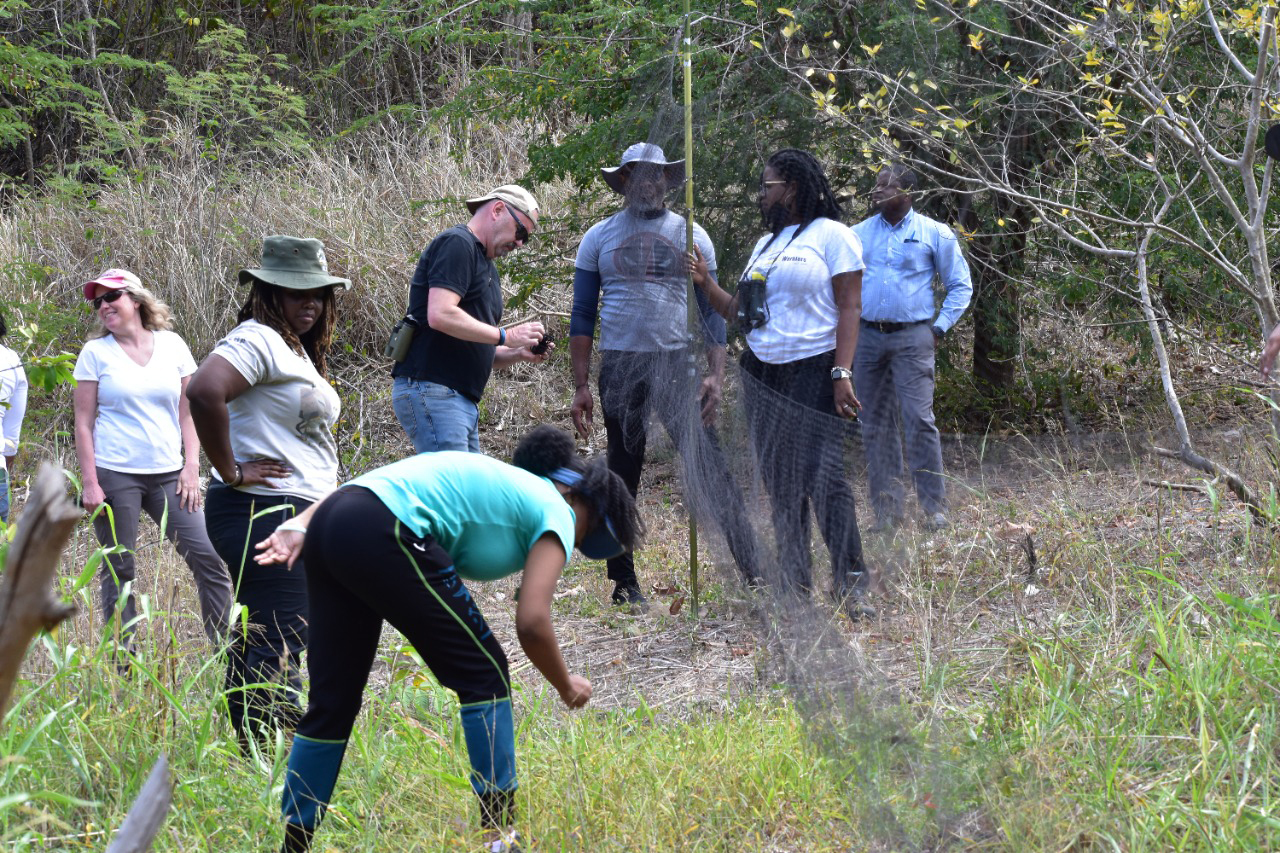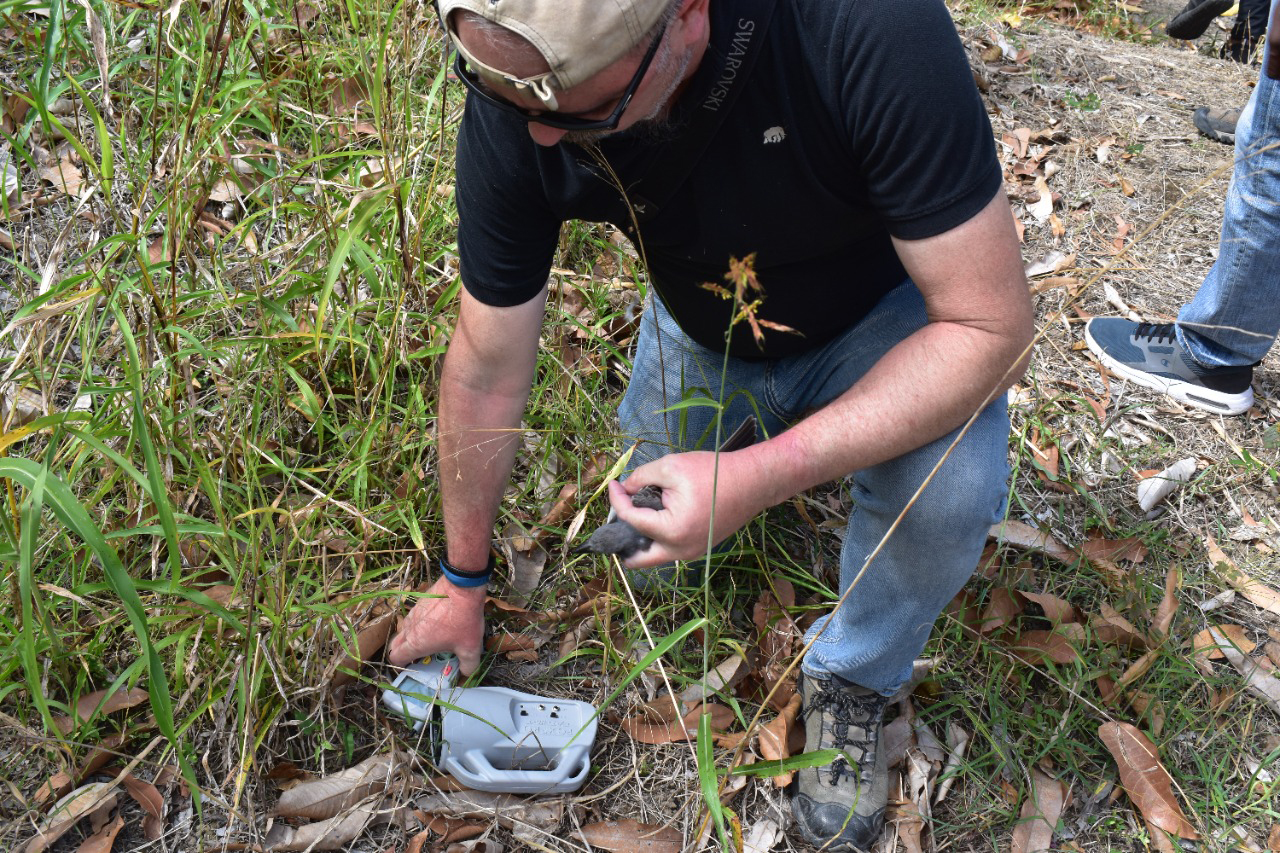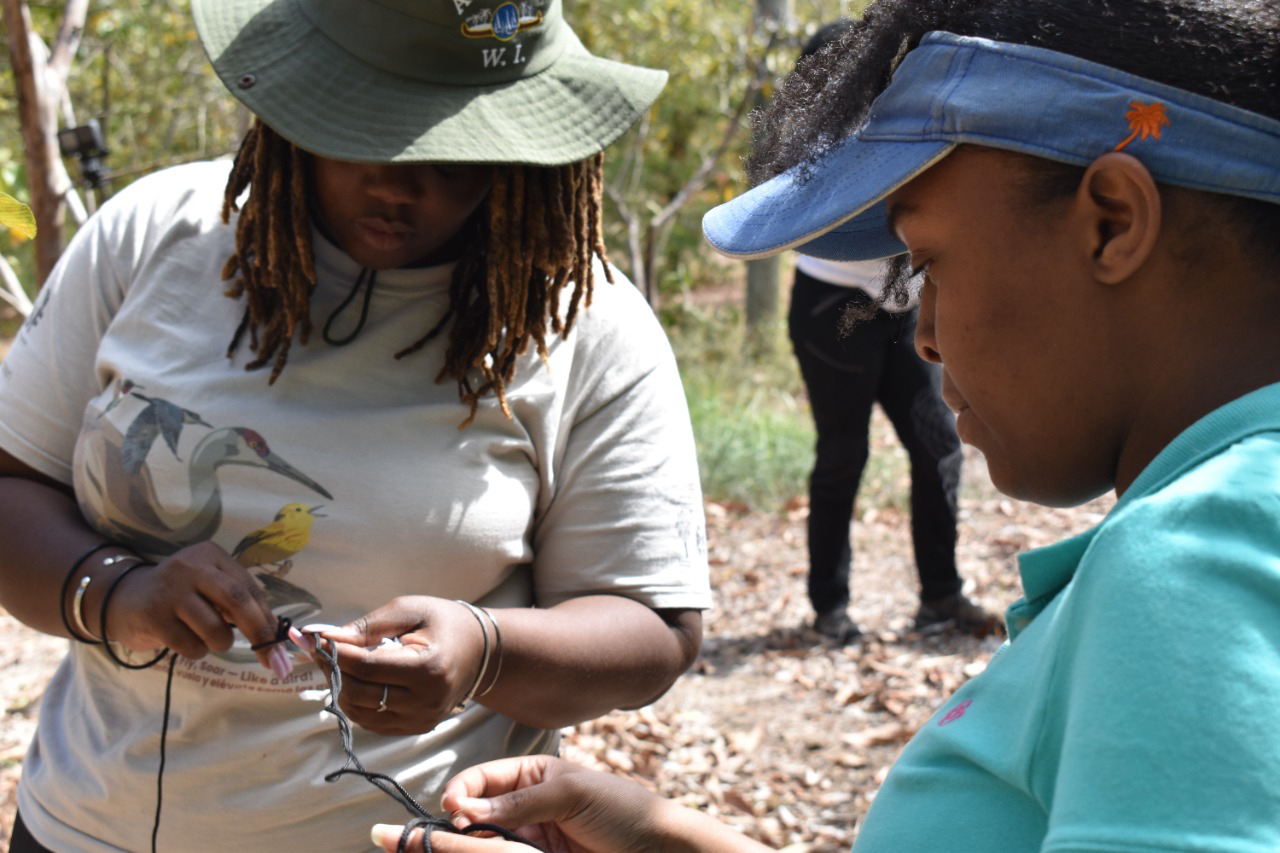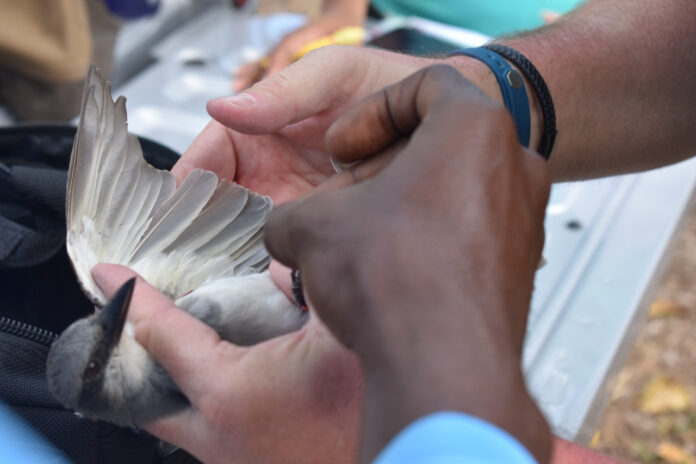

Story and photos by Elesha George
Work to determine the level of mercury found in fish, birds, human hair, and the air in Antigua and Barbuda has begun.
The venture is a collaboration between the Department of Analytical Services (DAS) and the US-based Biodiversity Research Institute (BRI).
While checking for mercury is hardly on the list of concerns that we may share with our friends over lunch, mercury exists in places we do not often consider, and can be harmful in large doses or frequent exposure.
This week, a team headed by Dr Linroy Christian, Director of Analytical Services in Antigua and Barbuda, and which included members of the Forestry Division and the Environmental Awareness Group (EAG), learned how to measure mercury levels in bird species in the country’s most populated birding sites.
To do this, environmentalists were trained on procedures to safely trap, band, and track birds, and scientists on methods of sample collection for subsequent analysis.
“The expected outcome is that we would then set up a long-term monitoring programme for mercury and other toxic substances in wildlife and humans. So, we hope that in the next few years we would have accumulated enough data to really measure the impact of mercury on human health and on the environment,” explained Dr Christian.
“It’s a dual exercise where we’re looking at the training on the trapping and tagging of birds and taking samples, and then the other side would be to engage the laboratory staff in the management of the samples.”
David Evers, the Executive Director and Chief Scientist at the Biodiversity Research Institute in Maine, explained that the idea is to collect data that can possibly affect policy and management change.
“Here in Antigua, you’re not doing anything wrong, but there’s mercury coming in from the air, it’s being deposited on your landscape, not just in Antigua but around the Caribbean, around the world,” he said.
“So, we want to know how much is on the birds, and the fish and the people in Antigua, and there’s some management policy decisions that can be made thereafter.”
Senior Forestry Officer in the Ministry of Agriculture, Adriel Thibou, whose work normally involves monitoring a slightly smaller flying creature, said the division participated in this exercise so that they can apply their training to better monitor and analyse bats across the country.
He compared his monitoring of bats since 2015 to his experience with collecting samples from birds, remarking that “this is all new for us”. And after accompanying the group to monitor birds on Barbuda, he said he has a new-found respect for his peers.
“We’ve never done some of the tasks that we’re being asked to perform which is collecting fur samples and stuff like that,” he explained.
“We’re not necessarily going to start with the collection of blood samples. We will be able to at least collect the furs and send them off for testing. That will be our whole thing for the next few months until we get proper training for the blood sample collection.”
Meanwhile, Shanna Challenger, the Offshore Islands Conservation Programme Coordinator with the Environmental Awareness Group (EAG), said the group is using the training to build capacity to improve their bird monitoring skills.

“It’s very exciting, this is the kind of work that we’ve been wanting to do, but didn’t have the resources or the capacity or expertise to really do it. So, we’re really excited to continue doing this work in these bird and biodiversity areas,” she said.
Challenger shared that there are methods that her team also had to unlearn during the training, remarking that “it’s been interesting to see the kind of different methods”.
The Specific International Programme implemented by the Minamata Convention on Mercury – a global treaty to protect human health and the environment from the adverse effects of mercury – is a regional initiative to assist Caribbean countries to establish a regional laboratory network for mercury contaminant analyses.
The project, submitted by Antigua and Barbuda, became one of 10 selected by the programme’s governing board in 2019.
Since then, the DAS has invited a few countries from around the region to join its project, which has now expanded into a regional initiative.







